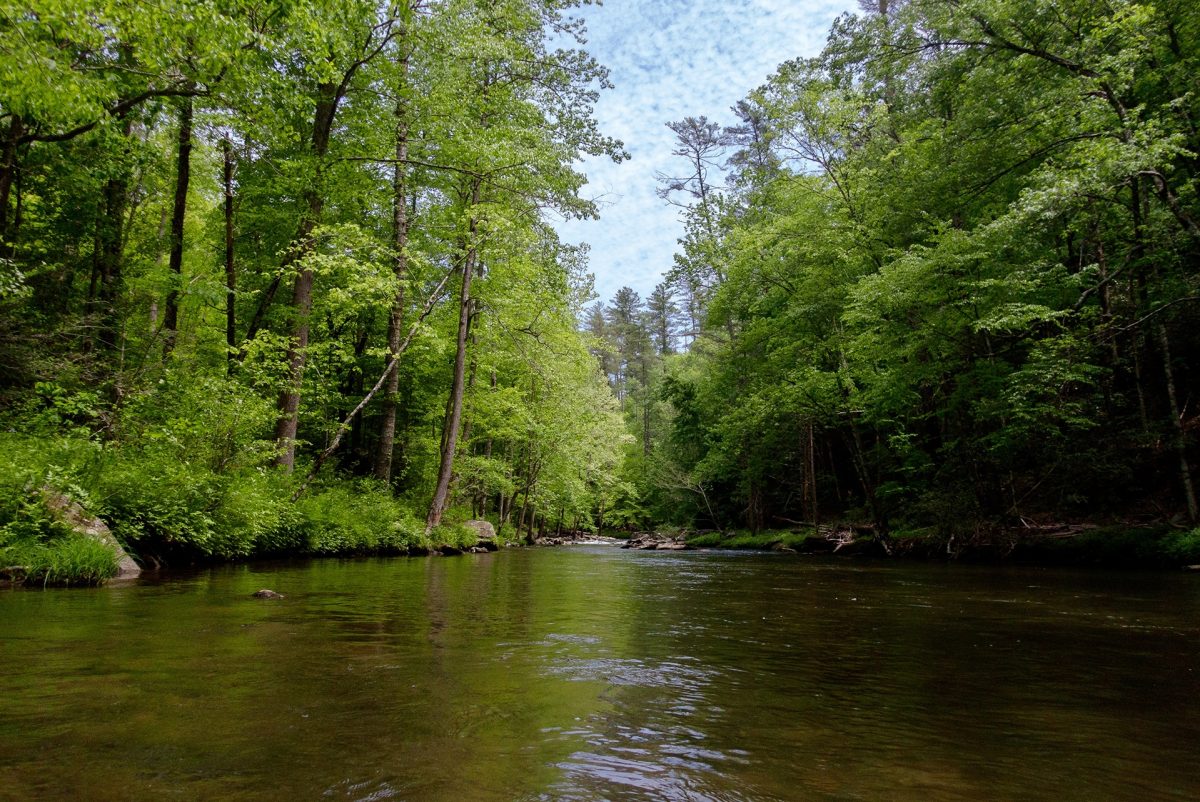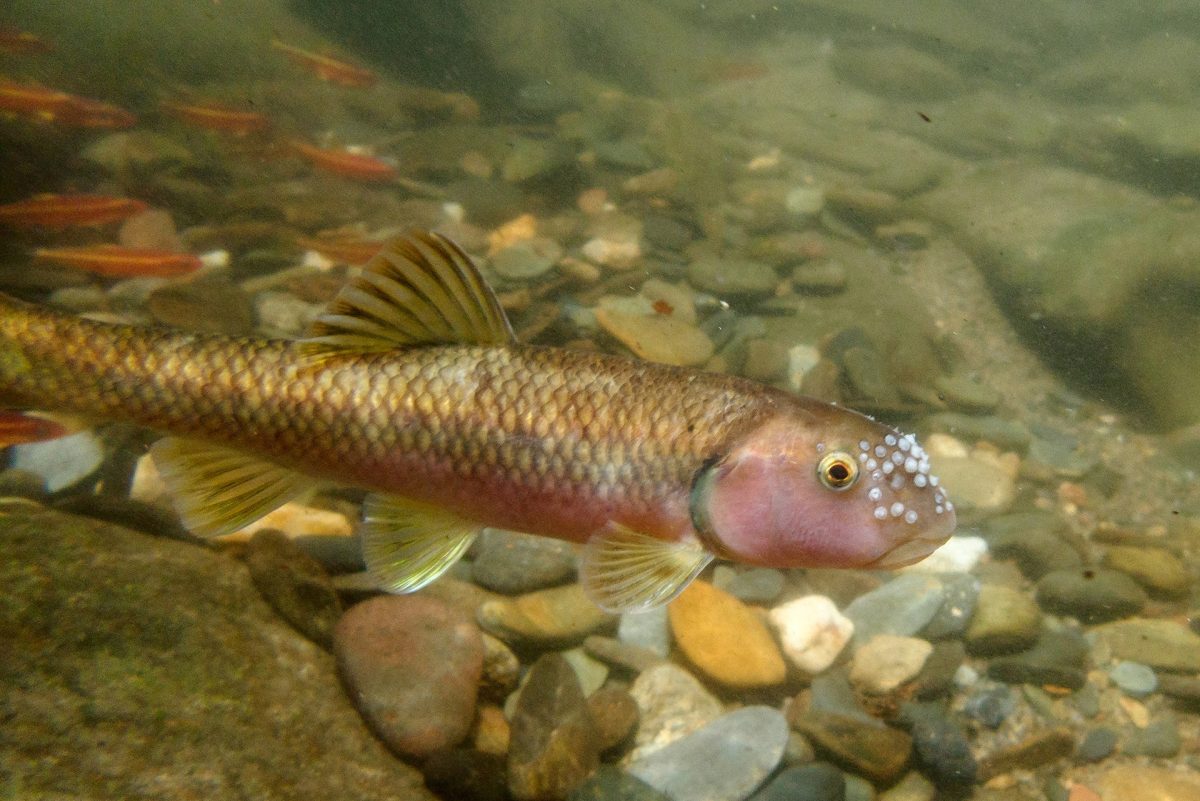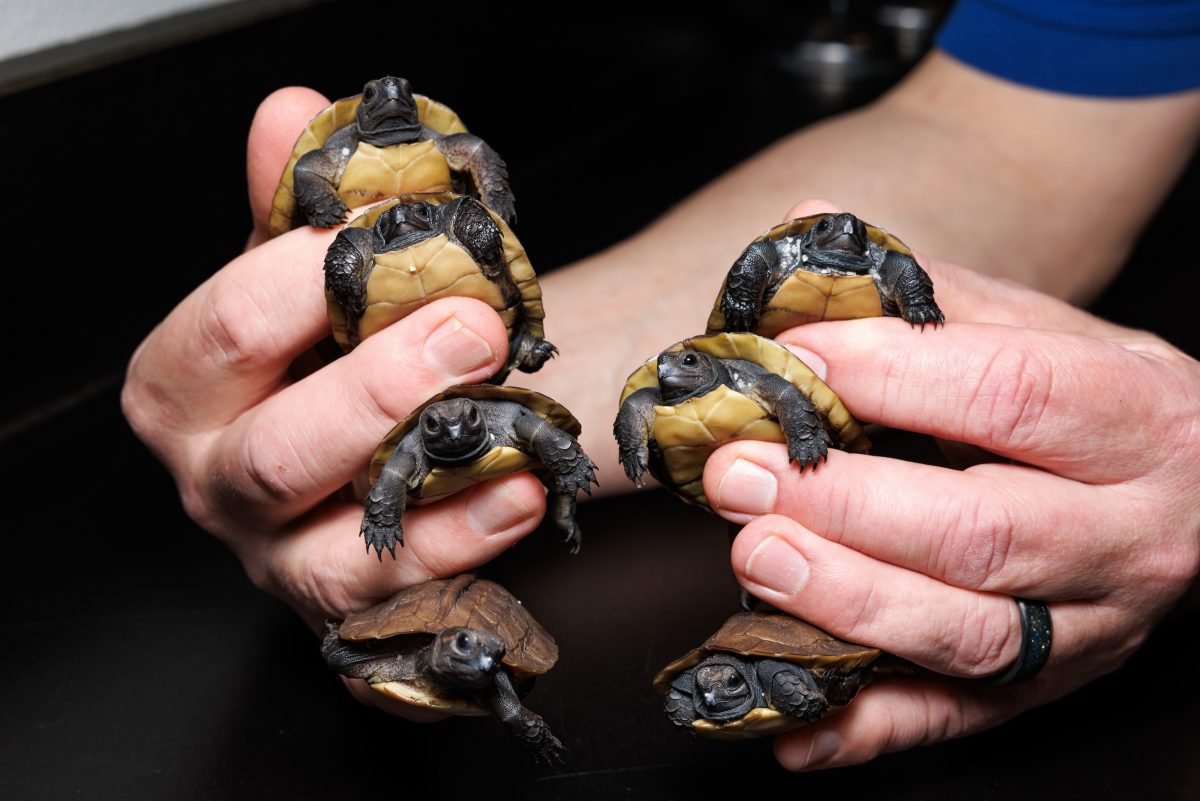Don a mask and snorkel and dip your face into the Tellico River this time of year, and you just might be treated to the sight of one of the freshwater world’s most industrious builders at work.
The River Chub (Nocomis micropogon) is a common minnow found throughout North America’s waterways, but don’t confuse its ubiquitous presence for simplicity – this fish is anything but boring.
The male River Chub’s head swells in size as the breeding season arrives in the spring and sprouts multiple small tubercles from its snout. That’s when the hard work begins.
The male chub begins picking up and carrying round, smooth river stones with its mouth, rearranging the substrate of the stream as it carefully builds a complicated breeding nest in the flow of the current. Some of these nests can be as large as two feet tall and three feet long, which is quite the feat for a fish that grows no longer than about a foot in length.


Left: The Tellico River is an idyllic habitat for the River Chub. Right: A River Chub defends its nest.
Once the mound of stones is complete, the male will mate with a gravid female, who then deposits her fertilized eggs in the nest. The male will defend this underwater nursery from rivals and predators as the eggs mature and eventually hatch about a week later.
River Chub nests are more than just a breeding ground for chubs. Other breeding species, including Saffron Shiners (Notropis rubricroceus) and Rosyside Dace (Clinostomus funduloides), also deposit their eggs amidst the rocks used to create chubs’ mounds.
More than 30 minnow species are known to utilize the spawning nests of River Chubs for their own young. The rapid flow of water through the nest provides good oxygenation, which is essential to the maturing eggs. The narrow crevices in the nest also offer protection from predators.
If you’d like to see River Chubs in the dry comfort of the Aquarium, look for them towards the bottom of the Mountain Stream exhibit as you enter the Canyon at the top of River Journey.

